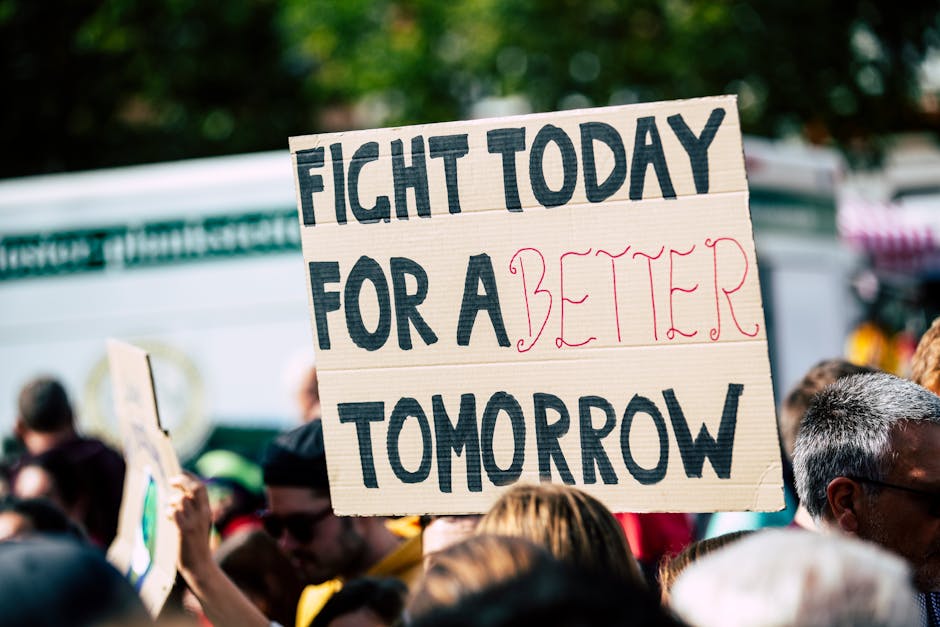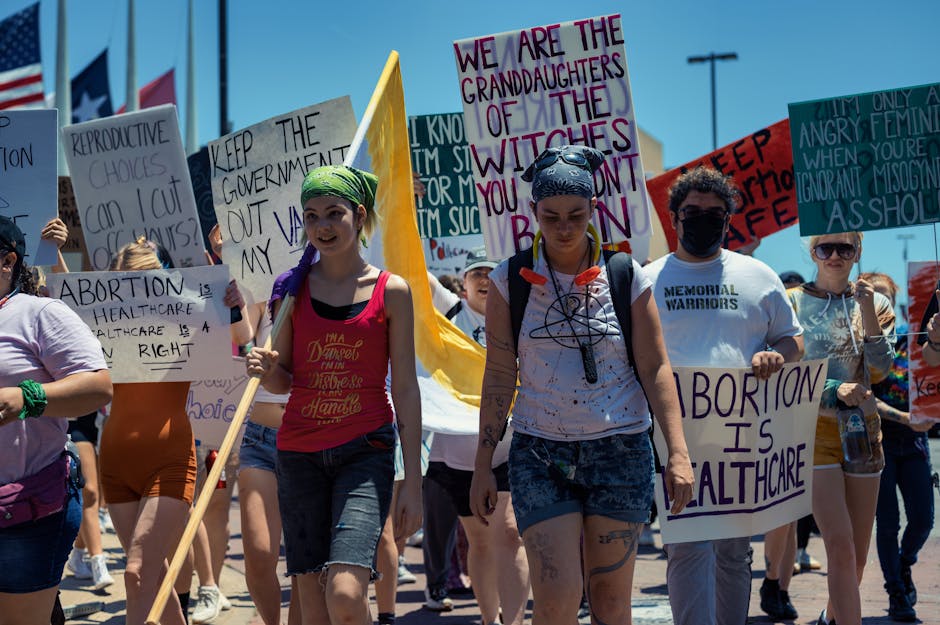
Alright, so here we are, chugging along into 2025, and the whole internet thing, well, it’s just gotten wilder, hasn’t it? Everyday there’s some new app or a different way to buy stuff online, and for anyone trying to get their business noticed, it can sometimes feel like trying to shout in a really, really loud concert. You’re there, you know you have something good to say, but how does anyone actually hear you over all that racket? That’s where something called PPC comes into play, which, honestly, a lot of people probably hear and just think “another acronym, great,” but it’s really pretty straightforward once you get past the fancy name.
We’re going to talk about what is a PPC campaign in a way that, you know, makes some sense, without all the super-polished jargon that you usually find in these kinds of discussions. Because, let’s be real, sometimes you just need someone to tell you how it is, not try to impress you with big words. This isn’t a perfect essay; it’s more like a chat about how businesses, big and small, try to grab your attention when you’re doing stuff online, particularly in this current digital age, which, it keeps changing, pretty rapidly too, if you ask me. So, if you’ve ever typed something into a search engine, or scrolled through social media and seen an ad that just, like, popped right up, this is normally how those things happen. It’s a method for getting eyeballs on your stuff, basically, by paying for each person who clicks.
So, What Really is a PPC Campaign, Anyway?
Okay, let’s get down to brass tacks about what is a PPC campaign. PPC, which stands for Pay-Per-Click, is an advertising model, simple as that. It’s when advertisers, which could be any kind of company or person selling something, pay a fee every single time someone clicks on one of their ads. Think of it like this: instead of trying to make your website so incredibly good that Google just naturally wants to show it to everyone, which takes, like, ages and a lot of writing, you can actually pay to jump the queue a bit. You’re essentially buying visits to your site, rather than waiting to earn those visits organically over time. That’s a big difference right there, between paying for a click and hoping someone finds you just because your content is super good.
This whole process, it starts with an ad, naturally. You see these ads all over the place, don’t you? Most notably, they’re right there at the top of your search results page when you type something into Google or Bing. You know, those little boxes that say “Ad” right next to them? Those are PPC ads. But it’s not just search engines. These ads appear on websites you browse, often called display ads, and they’re definitely a big part of social media platforms like Facebook, Instagram, TikTok, and LinkedIn. It’s pretty much anywhere you can find a lot of people hanging out online, waiting for content, you know.
The main idea for businesses getting into this kind of thing, using a what is a PPC campaign, is often speed. They want traffic, and they want it now. If you’re launching a new product, or you’ve got a limited-time sale, waiting for your website to naturally show up in search results just isn’t fast enough. So, they set up these ads, decide who they want to show them to, and then, when someone clicks, they pay a bit of money. It’s a pretty direct way to connect with potential customers, or at least get them to your digital doorstep, if you know what I mean.
How Does This Whole Pay-Per-Click Thing Get Put Together? The Bits and Bobs.
Putting together a what is a PPC campaign is kind of like building with LEGOs, but with words and numbers instead of bricks. There are a bunch of pieces that need to fit, more or less, together to make the whole thing actually work and not just be a waste of money, because that can happen too, you know.
First up, keywords. These are super important. When you go to Google and type in, say, “best non-slip shoes for nurses,” those words are what an advertiser might bid on. They want their ad for non-slip nursing shoes to show up when someone types that exact phrase, or something pretty close to it, into the search bar. Getting the right keywords, figuring out what people are actually typing into their phones or computers, is a pretty big part of the work involved, it really is. If you pick the wrong ones, your ad shows up for the wrong people, and then, well, no good for anybody.
Then you’ve got the ad copy. This is the actual message, what your ad says. It’s got to be short, punchy, and make someone want to click it. If you’re selling those non-slip shoes, your ad might say something like “Super Comfy Non-Slip Nurse Shoes – Get Yours Today!” Plus, you usually get a little headline and a description. It’s not a lot of space, which is, like, part of the challenge sometimes. You want to make it sound appealing, but also tell people what they’re gonna get when they click. It’s a bit of an art, writing these little snippets.
After someone clicks your ad, where do they go? That’s the landing page. This is the specific page on your website that’s meant to greet the person who just clicked. It needs to match what the ad promised. If your ad was about non-slip shoes, the landing page better show a bunch of non-slip shoes, not, like, surgical masks or something totally different. If it doesn’t match, people just bounce right off, and you’ve basically paid for a click that didn’t really go anywhere productive, which is, you know, not good.
And how do your ads actually show up? That’s where bidding comes in. It’s not just about who pays the most, although that helps. It’s a pretty complicated auction system. You tell the ad platform (like Google Ads) how much you’re generally willing to pay for a click on a certain keyword. But the ad platform, it also looks at how good your ad is, how relevant your landing page is, and a few other things. They call this a “Quality Score” or something similar. So, sometimes a company with a slightly lower bid but a much better ad and landing page might win the top spot over someone who just throws a lot of money at it. It’s a way to keep things, well, fairer, I guess, and better for the searcher too.
You also get to do something called targeting. This means you can show your ads to specific groups of people. You can say, “I only want nurses in, like, the state of California, who are between 25 and 55, and who have shown interest in medical scrubs online.” That way, your ad isn’t just blasted out to everyone, but to the people who are most likely to actually buy what you’re selling. It makes the whole thing much more efficient, normally.
And all this stuff, it normally happens on ad networks. Google Ads is probably the biggest one, where you put your ads on Google search results and a huge network of other websites. Microsoft Advertising does something similar for Bing. And then, as I said, social media platforms have their own ad systems, where you can do really detailed targeting based on people’s interests and what they do on the platform.
Why Bother with PPC Campaigns in 2025? What’s the Good Part?
You might be thinking, “This sounds like a lot of work and money.” And, yeah, it can be. But there are some pretty good reasons why businesses, big ones and little ones alike, keep coming back to a what is a PPC campaign model, even now, well into 2025.
One of the big things is quick results. Seriously, you can set up a campaign today, and sometimes, depending on approval processes and stuff, your ads can be running and getting clicks within hours. Compare that to search engine optimization (SEO), where you might wait months, even a year, to see your website naturally climb to the top of search results. If you need sales now, PPC is a way to try and make that happen fairly quickly.
Then there’s the controllable budget. You get to decide exactly how much you want to spend. You can say, “I’m only spending $100 a day, no more, no less.” And when that $100 is gone, your ads stop running for the day. This is super handy, especially for smaller businesses who don’t have, like, an endless supply of cash to throw around. You can start small, see what happens, and then adjust things.
You also get to be really, really targeted with your audience. Remember that example about nurses in California? You’re not just hoping the right people see your ad; you’re telling the ad platform exactly who you want to show it to. This means you’re spending your money on clicks from people who are generally already interested in what you’re selling, which, you know, makes sense. It helps a business not waste money on just random clicks from uninterested parties.
And it’s really measurable. This is a big one. With PPC, you can see everything. You can see how many people saw your ad, how many clicked it, how much each click cost you, and sometimes even what people did after they got to your website. Did they buy something? Did they fill out a form? This kind of data lets you know what’s working and what isn’t, so you can tweak things and make your campaign better over time. You’re not just guessing if it’s doing good, normally.
Finally, there’s a lot of flexibility. If an ad isn’t working, or a keyword is too expensive, you can change it, like, right away. You can pause campaigns, start new ones, test different messages, all pretty quickly. This allows businesses to react to things happening in the market, or adjust for seasonal sales, or just generally try new approaches without a huge amount of downtime.
Keeping Your PPC Campaign Going Strong in the Coming Years (Like 2025)
The world of online advertising doesn’t just sit still, you know. It’s always moving, always changing, and what worked perfectly last year might need some adjustments for, well, for 2025 and beyond. So, if you’re thinking about what is a PPC campaign and how it lives in the future, there are a few things that are becoming more and more important.
One big thing is how AI is becoming more and more a part of everything. You’re already seeing it, actually. Ad platforms are using clever computer programs, those AI sorts of things, to help with automated bidding, figuring out the best times to show ads, and even helping you write better ad copy. It’s not about replacing humans entirely, not yet anyway, but it definitely helps make campaigns more efficient, usually. It means you’ll probably be spending more time guiding the AI and less time manually tweaking every single little setting.
Personalization is also a huge deal. People generally expect ads to feel like they’re just for them, not some generic message. So, showing ads that are super specific to someone’s past behavior, their current location, or what they’ve been looking at online? That’s going to be even more common. It’s about making the ad feel relevant, even if it’s just one of a million ads that someone sees, which, you know, is a bit of a challenge.
Then there are all the privacy changes. Cookies are going away, or at least being restricted in many browsers, and people are more aware of their data. This means advertisers have to find new ways to understand who they’re talking to without, like, knowing absolutely everything about them. It’s a bit of a tricky dance, keeping ads relevant without invading privacy. It makes things a bit more challenging for targeting, but also pushes people to be more creative.
We’re also seeing more and more of visual search and voice search. People aren’t just typing keywords anymore. They’re asking Siri or Google Assistant questions, or even snapping a picture of a product to find out where to buy it. So, ads that pop up in these new kinds of searches, or are optimized for how people talk instead of type, those are things PPC people will have to keep an eye on.
And it comes back to really, really understanding your audience. With all the changes, the more you know about the actual people you’re trying to reach – what they care about, what problems they have, what makes them tick – the better your what is a PPC campaign will be, no matter what tech changes come along. It’s about being human, when advertising to humans, after all.
The Not-So-Great Stuff About PPC – Things to Watch Out For
While PPC can be, you know, pretty good for getting your message out there and bringing in traffic, it’s not all sunshine and rainbows. There are some downsides, some things you really need to be aware of, otherwise, you might end up a bit frustrated, or worse, out of pocket.
The most obvious one, probably, is the cost. If you’re not careful, or you’re in a super competitive industry, the price per click can get pretty high. Imagine paying $5 or even $10 every time someone just clicks on your ad. If a lot of those clicks don’t turn into sales, that money can vanish pretty quickly. It requires careful watching of the budget, and making sure your clicks are actually worth what you’re paying for them.
Then there’s the competition. You’re not the only one trying to sell non-slip shoes, right? There are probably hundreds, maybe thousands, of other businesses bidding on the exact same keywords. This drives up the prices, makes it harder for your ad to stand out, and generally just makes the whole thing a bit of a fight to get noticed. You really need to find your unique selling points, even in an ad, normally.
There’s also something called click fraud. This is when bad actors, or even just competitors, click on your ads over and over again, not because they’re interested in buying anything, but just to eat up your budget. It’s a sneaky thing, and while ad platforms do try to, like, detect and prevent it, it’s always something to keep an eye on, because it is out there.
And setting up and managing a what is a PPC campaign effectively, it often has a pretty steep learning curve. It’s not just about picking some keywords and writing an ad. You need to understand bidding strategies, targeting options, how to write really good ad copy, how to design a landing page that works, and then how to look at all the data and make changes. It can be quite a bit for someone to pick up on their own, to be frank.
So, it’s not a set-it-and-forget-it kind of thing. It needs consistent effort, regular checks, and adjustments. If you just launch a campaign and then ignore it, you’ll probably find that it either stops performing well or just drains your budget without good results. It’s an ongoing commitment, really.
So, there you have it, a kind of unvarnished look at what is a PPC campaign. It’s this pretty powerful tool for getting your business in front of people online, and quickly too, but it needs to be understood, and managed with some care. In 2025, with all the AI and new tech, it’s still a really important part of how businesses get their message out there, even if the methods keep changing a little bit. If you’ve got something to sell, or a message to share, and you want people to see it, then knowing about PPC is probably a pretty good idea.
Frequently Asked Questions about What is a PPC Campaign
What exactly is a PPC campaign and how does it differ from organic search?
A PPC campaign is basically where you pay for clicks on your ads, showing up in places like search results or social media. You directly pay a fee each time someone clicks. Organic search, on the other hand, is when your website shows up in search results because search engines, like Google, think your content is really good and relevant, not because you paid for that specific spot. It’s about earning that visibility over time, usually through things like good articles and website structure, whereas PPC is more about buying it.
Can a small business actually run a what is a PPC campaign successfully?
Oh, absolutely, yes. Small businesses can definitely run a successful PPC campaign. In fact, it can be really, really good for them because you can start with a small budget and scale up as you learn. The key is to be very focused with your targeting and keywords, so you’re not wasting money on broad audiences. It’s about being smart and precise, normally, rather than just having a huge budget.
How long does it typically take to see results from a PPC campaign?
One of the big draws of PPC is how fast it can be. You can usually start seeing results – like clicks and website visits – within a few hours or a day after your campaign starts. However, to see really good, meaningful results, meaning sales or leads, and to properly optimize your campaign, it might take a few weeks or even a month or two. It’s quick to get started, but needs some time to truly hit its stride.
Is managing a PPC campaign something I can do myself or do I need help?
You can definitely manage a PPC campaign yourself, especially if you start with, like, a smaller budget and are willing to learn. There are tons of resources out there. But, if your campaign gets bigger, or you find the whole thing a bit confusing or time-consuming, bringing in someone who has done it before, like a marketing person or an agency, can be really helpful. It all just depends on your comfort level and how much time you have.
What kinds of businesses usually get the most out of a what is a PPC campaign?
Generally, businesses that sell products or services online, especially those with a clear, specific target audience and a decent profit margin, tend to get a lot out of PPC. Things like e-commerce stores, service providers (plumbers, lawyers), software companies, or even local businesses looking for quick customer acquisition. If someone is actively searching for what you offer, or is likely to be interested, then a PPC campaign often makes a lot of sense for reaching them.






